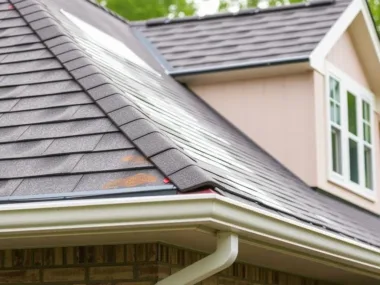Whether it’s a small drip or a major leak, ceiling water leakage can lead to significant damage if not addressed promptly. This comprehensive guide details causes, dangers, and effective solutions to keep your home safe and dry. From DIY fixes to when to call a professional, learn how to tackle ceiling leaks and prevent future issues.
The Best Ceiling Water Leakage Solutions: A Comprehensive Guide
Ceiling water leakage is more than just a nuisance—it’s a homeowner’s nightmare. A small drip can quickly turn into a flood of problems, from structural damage to mold growth and costly repairs. But don’t panic! With the right approach, you can tackle leaks head-on and protect your home from future disasters. This guide will walk you through everything you need to know about ceiling water leaks: what causes them, why they’re dangerous, and—most importantly—how to fix them. Whether you’re a DIY enthusiast or prefer to call in the pros, you’ll find actionable solutions to keep your ceiling dry and your home safe.
What Causes Ceiling Water Leakage?
Before diving into solutions, it’s crucial to understand what’s causing the leak. Think of your home as a complex system where water can sneak in through various weak points. The most common culprits include:
- Roof Damage: Missing shingles, cracked flashing, or worn-out seals can let water seep through, especially after heavy rain or snow. Over time, even a tiny gap can lead to a big problem.
- Plumbing Failures: A burst pipe, leaky valve, or even a dripping faucet upstairs can send water trickling down to your ceiling. These leaks often start small but can escalate quickly if left unchecked.
- Condensation: In humid areas like bathrooms or kitchens, warm air meeting cold surfaces (like pipes or ductwork) can create condensation. This moisture buildup can eventually cause water to drip from your ceiling.
- Appliance Malfunctions: Washing machines, dishwashers, or water heaters can spring leaks, especially if they’re old or poorly maintained. A sudden gush or slow drip can wreak havoc on your ceiling.
- Poor Insulation or Ventilation: Inadequate attic insulation or ventilation can lead to ice dams in winter, where melting snow refreezes at the roof’s edge, forcing water under shingles and into your home.
Identifying the source is half the battle. Once you know what’s causing the leak, you can choose the right solution to fix it.
Why Ceiling Leaks Are Dangerous (and Why You Should Act Fast)
A small water stain might seem harmless, but it’s often the tip of a much larger iceberg. Here’s why you should never ignore a ceiling leak:
- Structural Damage: Water weakens wood, drywall, and even concrete over time. If left unchecked, it can compromise the integrity of your home’s framework, leading to sagging ceilings or worse.
- Mold and Mildew: Moisture creates the perfect breeding ground for mold, which can spread quickly and pose serious health risks, especially for those with allergies or respiratory issues.
- Electrical Hazards: Water and electricity don’t mix. A leak near wiring or light fixtures can cause short circuits, fires, or electrocution.
- Skyrocketing Repair Costs: The longer you wait, the more expensive the fix. What starts as a $100 repair can balloon into thousands if water damage spreads.
The bottom line? Speed is your best friend when it comes to leaks. The sooner you act, the better your chances of avoiding a full-blown disaster.
Best Solutions for Ceiling Water Leakage
Now, let’s get to the good stuff: fixing the leak. The best solution depends on the cause, location, and severity of the leak. Here are the most effective methods to stop water in its tracks:
1. Drip Diverters: A Quick Fix for Immediate Relief
If you’ve got a leak and can’t fix it right away (say, during a storm), a drip diverter is your go-to. These handy devices catch and redirect water away from your ceiling, preventing further damage until you can make permanent repairs.
- How It Works: A drip diverter is essentially a tarp or plastic sheet hung from the ceiling to funnel water into a bucket or drain.
- When to Use It: Ideal for temporary relief during heavy rain or while waiting for a professional to arrive.
- Pro Tip: Make sure the diverter is securely fastened and angled correctly to avoid pooling water.
2. Waterproof Sealants: Seal the Deal
For small leaks caused by cracks or gaps in your roof or ceiling, waterproof sealants are a lifesaver. These products create a watertight barrier, stopping leaks in their tracks.
- Types: Silicone caulk, roofing cement, and elastomeric sealants are popular choices. Each has its strengths—silicone is flexible, roofing cement is durable, and elastomeric sealants are great for larger cracks.
- Application: Clean the area, apply the sealant generously, and smooth it out for a tight seal.
- Best For: Minor roof leaks, plumbing joints, or small ceiling cracks.
3. Roof Repairs: Tackle the Source
If the leak is coming from your roof, you’ll need to address the root cause. This might mean patching shingles, fixing flashing, or applying a waterproof membrane.
- Shingle Replacement: For missing or damaged shingles, replace them with new ones and seal with roofing cement.
- Flashing Repair: Flashing (the metal strips around chimneys or vents) can corrode over time. Re-seal or replace it to prevent water intrusion.
- Waterproof Membranes: For flat roofs or areas prone to pooling, a waterproof membrane (like rubber or PVC) can provide long-term protection.
4. Plumbing Fixes: Stop the Drip
Leaky pipes are a common cause of ceiling water damage. Depending on the issue, you might need to:
- Tighten Connections: Sometimes, a loose joint is all it takes to cause a leak. Tighten any visible connections with a wrench.
- Replace Seals: Worn-out washers or gaskets can be swapped out easily.
- Call a Plumber: For burst pipes or major leaks, it’s best to bring in a professional to avoid further damage.
5. Improve Ventilation and Insulation
If condensation is the culprit, better ventilation and insulation can prevent future leaks.
- Attic Ventilation: Install vents or fans to reduce moisture buildup.
- Insulation Upgrades: Add insulation to prevent warm air from meeting cold surfaces, which causes condensation.
- Dehumidifiers: In humid areas, a dehumidifier can keep moisture levels in check.
DIY vs. Professional Help: When to Call in the Experts
Not all leaks are created equal. Some are simple enough for a weekend warrior, while others require a pro. Here’s how to decide:
- DIY-Friendly Fixes:
- Small roof leaks (e.g., missing shingles)
- Minor plumbing issues (e.g., tightening a joint)
- Applying sealants or drip diverters
- Call a Professional For:
- Major roof damage (e.g., large holes or structural issues)
- Burst pipes or extensive plumbing failures
- Electrical hazards near the leak
- Mold remediation
If you’re unsure, it’s always better to err on the side of caution. A professional can assess the damage and recommend the best course of action.
Real-Life Example: A Tale of Two Leaks
Let’s bring this to life with a quick story. Imagine two homeowners, Alex and Jamie, both dealing with ceiling water leaks.
- Alex’s Leak: A small drip from a bathroom ceiling, caused by a loose plumbing joint. Alex grabs a wrench, tightens the connection, and applies silicone caulk for good measure. Problem solved in under an hour.
- Jamie’s Leak: A massive water stain spreading across the living room ceiling after a storm. Jamie tries a drip diverter to buy time, then calls a roofer who discovers damaged flashing. The fix involves replacing the flashing and sealing the area with roofing cement.
Both homeowners acted quickly, but their solutions differed based on the leak’s cause and severity. What can you learn from their experiences? Always start by identifying the source, then choose the right tool for the job.
Preventing Future Leaks: Maintenance Is Key
The best way to deal with leaks is to prevent them from happening in the first place. Here’s how:
- Inspect Your Roof Regularly: Check for missing shingles, cracked flashing, or signs of wear after storms or at least twice a year.
- Maintain Your Plumbing: Look for drips, rust, or water stains under sinks and around appliances.
- Clean Gutters and Downspouts: Clogged gutters can cause water to back up and seep into your home.
- Monitor Humidity Levels: Use a hygrometer to keep indoor humidity between 30-50%, and ventilate high-moisture areas like bathrooms and kitchens.
Think of these tasks as insurance for your home. A little effort now can save you a lot of headaches (and money) later.
Conclusion: Don’t Let Leaks Rain on Your Parade
Ceiling water leaks are a common problem, but they don’t have to be a catastrophe. By understanding the causes, acting quickly, and choosing the right solution—whether it’s a drip diverter, sealant, or professional repair—you can protect your home and your wallet. Remember, the key to success is speed and prevention. So, next time you spot a drip, don’t wait—grab your tools (or your phone) and get to work. Your ceiling will thank you.














Leave a Reply